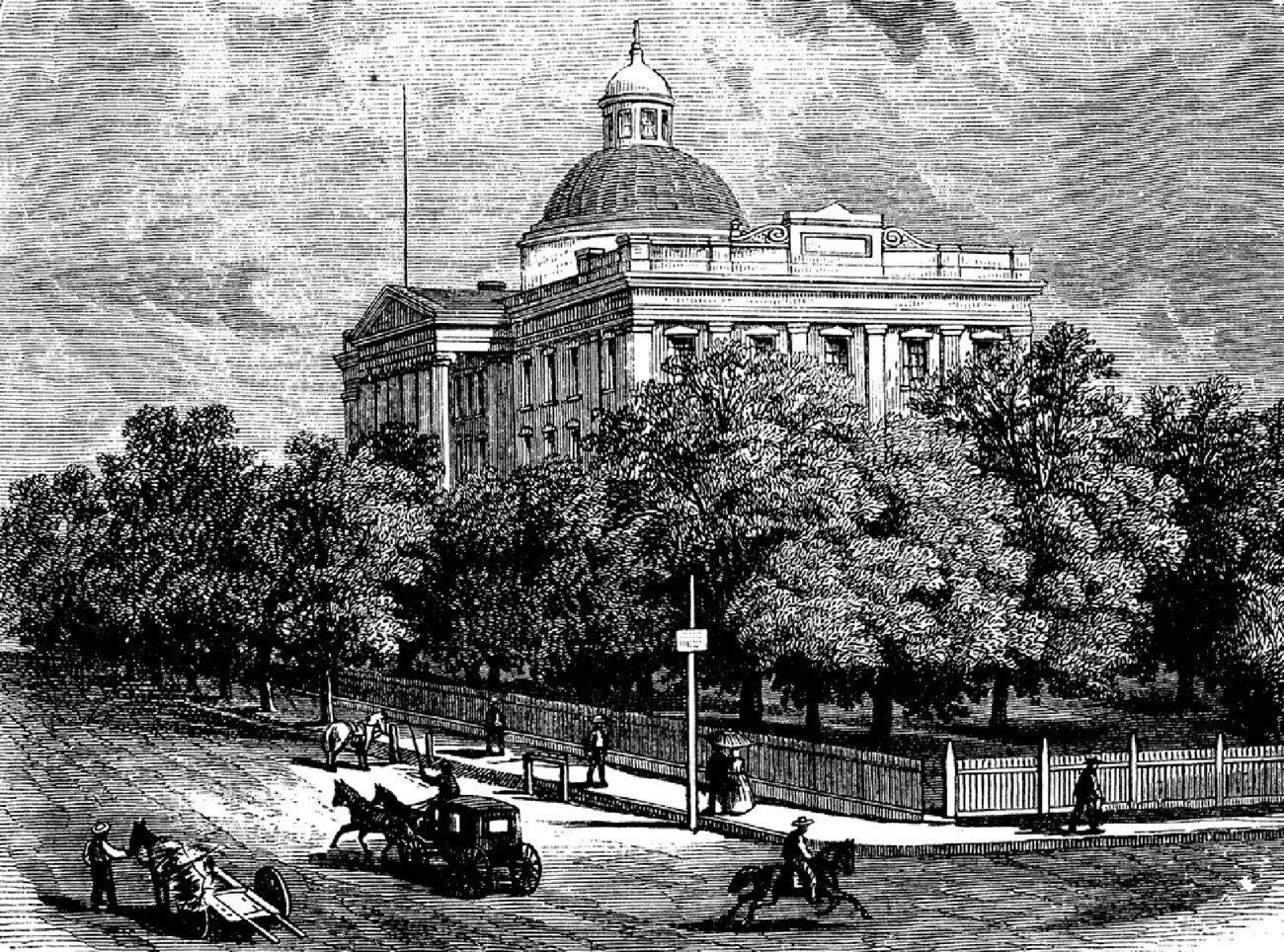Last updated: December 11, 2019
Article
Mississippi Secession
“Our position is thoroughly identified with the institution of slavery--the greatest material interest of the world.”
—Mississippi Secession Convention

Scribner's Monthly
Mississippi seceded from the United States on January 9, 1861. In doing so, members of the state’s secession convention felt it their duty to tell the world why. "Our position is thoroughly identified with the institution of slavery--the greatest material interest of the world," members declared. Most members saw secession as necessary to protect and continue slavery, the source of white wealth, identity, and values.
National unity had been eroding in the United States long before Mississippi seceded from the Union. The one central topic that divided the nation was the practice of enslaving people of African descent.
Abraham Lincoln’s 1860 presidential victory was the final act that thrust the United States into chaos. Politically defeated, a bloc of southern states chose to take action. States like Mississippi considered secession the answer to keeping slavery and black submission alive.
Seven days after Lincoln's victory, Mississippi Governor John J. Pettus called the state's legislature into special session. The governor encouraged lawmakers to hold a secession convention. "The existence or abolition of African Slavery in the Southern States is now up for final settlement . . ." Pettus wrote. He asked, "Can the lives, liberty, and property of the people of Mississippi be safely entrusted to the keeping of that sectional majority which must hereafter administer the Federal Government?"
The legislature did not think so. Lawmakers voted to hold a secession convention in the House of Representatives in Jackson, the state capitol. They would determine Mississippi's future on January 7.
When the secession convention met, Jackson came alive with energy. South Carolina had recently seceded, which animated those Mississippians who favored immediate separation. Two days into the convention, Mississippi voted in favor of secession by a vote of 83-15 with one in absentia. Mississippi became the second state to vote to leave the Union.
News of the vote caused a mixture of reactions across the state. In Jackson, “The result was received with the most vociferous cheering,” one reporter wrote. “Oxford is brilliantly illuminated,” another report said, and “bells are ringing, and guns are being fired. Three cheers for our gallant State!!” Not everyone celebrated, however. Natchez, according to another newspaper, did not rejoice at the news of disunion.
The members of the convention embraced the spirit of the Declaration of Independence by writing and publishing A Declaration of the immediate causes which induces and justify the secession of the State of Mississippi from the Federal Union. In Mississippi’s announcement, the convention listed various abuses they felt the North had inflicted on the South. Each abuse tied back to slavery.
For Mississippi, secession was "not a matter of choice, but of necessity." The ordinance declared, "Our decision is made . . . We embrace the alternative of separation; and for the reasons here stated, we resolve to maintain our rights with the full consciousness of the justice of our course, and the undoubting belief of our ability to maintain it." Slavery was the fountain of Mississippi’s wealth, identity, and values. Sensing the end of slavery was near, Mississippi seceded from the Union and helped lead the nation into civil war.
Beckert, Sven. Empire of Cotton: A Global History. New York: Vintage Books, 2015.
Dattle, Eugene R. "Cotton in a Global Economy: Mississippi (1800-1860)." Mississippi History Now. October 2006. URL http://mshistorynow.mdah.state.ms.us/articles/161/cotton-in-a-global-economy-mississippi-1800-1860.
Davis, Jefferson. Jefferson Davis, Constitutionalist: His Letters, Papers and Speeches. Volume 5. Edited by Dunbar Rowland, LLD. Jackson, MS: Printed for the Mississippi Department of Archives and History, 1923. URL https://babel.hathitrust.org/cgi/pt?id=mdp.39015012910801&view=1up&seq=70.
Dew, Charles B. Apostles of Disunion: Southern Secession Commissioners and the Causes of the Civil War. Charlottesville, VA: University of Virginia Press, 2016.
Deyle, Steven. Carry Me Back: The Domestic Slave Trade in American Life. New York: Oxford University Press, 2006.
Dubay, Robert W. John Jones Pettus, Mississippi Fire-Eater: His Life and Times, 1813-1867. Jackson, MS: University Press of Mississippi, 1975.
Freehling, William W. The Road to Disunion: Secessionists Triumphant, 1854-1861. New York: Oxford University Press, 2008.
Olsen, Christopher J. Political Culture and Secession in Mississippi: Masculinity, Honor, and the Antiparty Tradition, 1830-1860. New York: Oxford University Press, 2000.
Power, John L. “A Declaration of the Immediate causes which induce and justify the secession of the State of Mississippi from the Federal Union.” In Proceedings of the Mississippi State Convention, Held January 7th to 26th, A.D. 1861. Including the Ordinances, as Finally Adopted, Important Speeches, and a List of Members, Showing the Postoffice, Profession, Nativity, Politics, Age, Religious Preference, and Social Relations of Each. Jackson, MS: Power and Cadwallader, Book and Job Printers, 1861. URL https://docsouth.unc.edu/imls/missconv/missconv.html.
Rainwater, Percy L. Mississippi: Storm Center of Secession, 1856-1861. Baton Rouge, LA: Otto Claitor, 1938. URL https://babel.hathitrust.org/cgi/pt?id=mdp.39015027804445&view=1up&seq=63.
Ransom, Roger L. “Economics of the Civil War.” EH.Net Encyclopedia, edited by Robert Whaples. August 24, 2001. URL http://eh.net/encyclopedia/the-economics-of-the-civil-war/.
Smith, Timothy B. The Mississippi Secession Convention: Delegates and Deliberations in Politics and War, 1861-1865. Jackson, MS: University Press of Mississippi, 2014.
Townsend, John. The Doom of Slavery in the Union: Its Safety Out of It. Second Edition. Charleston, SC: Evans & Cogswell, 1860. URL https://archive.org/details/doomofslaveryinu00town/page/8.
Wooster, Ralph A. "An Analysis of the Membership of Secession Conventions in the Lower South." The Journal of Southern History 24, no. 3 (1958): 360-68. URL www.jstor.org.
